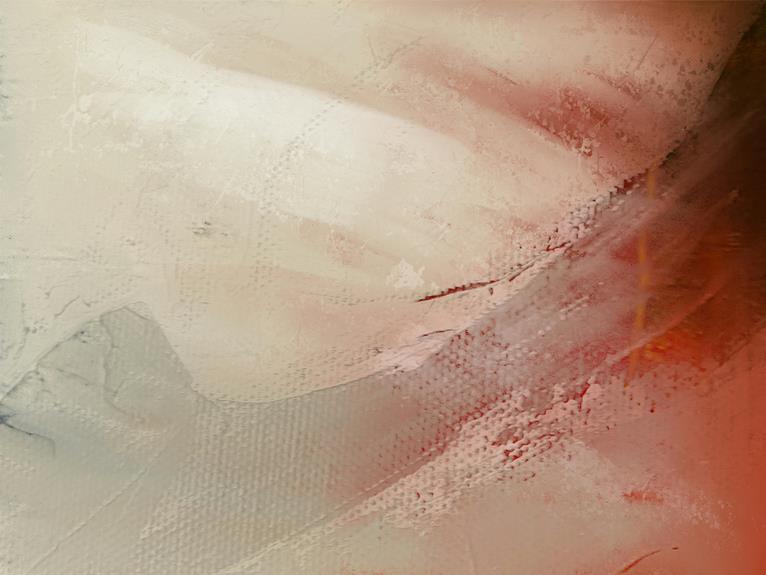When you think about canvas, the weight might not be the first factor that comes to mind, but it plays a crucial role in your projects. Whether you're an artist choosing the right material or someone considering canvas for practical applications, understanding the weight differences can significantly impact your experience. Heavier canvases offer durability but can be cumbersome, while lighter options provide portability. So, how do you find the perfect balance for your needs? The answer lies in exploring the various types and their specific applications.
Table of Contents
Key Takeaways
- Canvas weight varies based on material composition, with cotton being lighter and linen typically heavier due to its density and texture.
- Thickness is measured in ounces per square yard; heavier canvases (e.g., 12 oz) offer durability, while lighter ones (e.g., 6 oz) are more portable.
- Treatments like waterproofing and UV resistance can increase canvas weight but enhance durability and lifespan for outdoor applications.
- Lightweight canvas is ideal for easy portability and quick drying, making it suitable for casual use and travel.
Understanding Canvas Types
When you explore canvas types, you'll find they vary significantly in weight and texture, affecting your art projects. The most common types are cotton, linen, and synthetic materials.
Cotton canvas is popular for its affordability and versatility, making it a great choice for beginners. It tends to have a medium texture that works well with various paint types, from acrylics to oils.
Linen canvas, on the other hand, is known for its durability and fine texture. Artists often prefer it for high-quality works, as it provides better paint adhesion and longevity. While it's typically more expensive, many believe the investment pays off in the finished product.
Synthetic canvases offer a different experience altogether. They're usually lighter and more water-resistant, making them suitable for outdoor projects. However, they mightn't absorb paint as well as natural fibers, which can impact your final piece's look.
Understanding these canvas types helps you choose the right one for your specific project. Whether you're a beginner or a seasoned artist, selecting the appropriate canvas can elevate your artwork and enhance your creative process.
Factors Affecting Canvas Weight
When you consider canvas weight, several factors come into play.
The material composition, fabric thickness, and any treatments or coatings can significantly affect how heavy your canvas feels.
Understanding these elements will help you choose the right canvas for your needs.
Material Composition Impact
The weight of canvas primarily depends on its material composition, including the type of fibers and the weave density used in its construction. Different fabrics play a crucial role in determining how heavy or light the finished canvas will be. For instance, cotton is a common choice for canvas due to its natural properties, but it can vary in weight based on its quality and processing.
Here are some factors that influence canvas weight:
- Fiber Type: Cotton, linen, and synthetic fibers like polyester all have different densities and weights, affecting the overall heaviness of the canvas.
- Weave Density: A tighter weave usually results in a heavier canvas, while a looser weave can create a lighter, more breathable material.
Fabric Thickness Variations
Fabric thickness plays a vital role in determining the overall weight of canvas, with thicker materials generally resulting in a heavier product. When you're choosing canvas for your projects, it's essential to consider how the thickness will impact the weight and, ultimately, the usability of the canvas.
Thicker canvas, often measured in ounces per square yard, provides durability and resistance to wear, making it perfect for heavy-duty applications like tents or outdoor gear. However, this added weight mightn't be ideal for every situation. If you need something lightweight, thinner canvas options are available, which can be easier to handle and transport.
Keep in mind that the thickness also influences the canvas's stiffness and drape. Thicker fabric tends to be less flexible, which may affect how it behaves when stretched or sewn. On the other hand, a thinner canvas can offer more versatility in applications like art or crafting.
Ultimately, understanding the relationship between fabric thickness and weight helps you make informed choices tailored to your specific needs. So, think about the project requirements before settling on your canvas thickness.
Treatment and Coatings
Treatment and coatings can significantly influence the weight of canvas, adding extra layers that enhance durability and water resistance. When you choose a canvas for your project, consider how these treatments can affect its overall feel and functionality.
Here are some common treatments and coatings to keep in mind:
- Waterproofing: This treatment can add weight, but it protects the fabric from moisture damage.
- UV Resistance: UV coatings can increase durability, though they may also contribute to a heavier canvas.
Each treatment you select can enhance your canvas's performance, but they come with trade-offs in terms of weight. If you're looking for a lightweight option, you might want to prioritize treatments that offer essential protection without significantly increasing weight.
Understanding these factors helps you make an informed choice, balancing durability with practicality. So, when you're selecting your canvas, think about how treatments and coatings fit into your overall vision and requirements.
Comparing Canvas Thicknesses
When you compare canvas thicknesses, you'll notice significant differences that can impact durability and weight. Thicker canvases typically offer greater strength and can withstand harsher conditions, making them ideal for heavy-duty applications like outdoor gear or industrial use.
On the other hand, thinner canvases are lighter and easier to handle, which might suit projects like art or lightweight tents.
Canvas thickness is often measured in ounces per square yard. A standard thickness ranges from 6 oz to 12 oz or more. For instance, a 10 oz canvas strikes a balance between durability and weight, making it a popular choice for general-purpose items. Conversely, a 12 oz canvas provides extra sturdiness for demanding tasks but can feel bulkier.
When selecting canvas, consider how you plan to use it. If you need something that can endure rough treatment, opting for a thicker canvas makes sense. However, if portability and ease of use are your priorities, thinner options may be more suitable.
Ultimately, understanding these thickness differences helps you make informed decisions tailored to your specific needs and applications.
Benefits of Lightweight Canvas
When you choose lightweight canvas, you enjoy easy portability that makes transporting your gear a breeze.
This type of canvas also offers enhanced versatility, allowing you to use it for various projects and activities.
Plus, lightweight options provide a more comfortable experience, so you can focus on what really matters.
Easy Portability Advantages
Lightweight canvas makes it a breeze to carry your essentials wherever you go, ensuring you stay mobile without the added bulk. When you choose lightweight canvas, you're opting for comfort and convenience that enhances your everyday adventures. Whether you're heading to the gym, a picnic, or a weekend getaway, you'll appreciate how easy it is to manage your load.
Here are some key advantages of lightweight canvas:
- Easier to carry: You can throw it over your shoulder without straining your back or arms, making it ideal for long days out.
- Space-saving: Its lightweight nature allows you to pack more into your bag without worrying about exceeding weight limits, whether on a flight or during a road trip.
With these benefits, lightweight canvas enhances your mobility, letting you focus on enjoying your activities rather than managing cumbersome gear.
Enhanced Versatility Options
The versatility of lightweight canvas makes it suitable for a wide range of activities and settings, from casual outings to travel adventures. You'll find that its adaptability enhances your experience, allowing you to use it for various purposes without feeling weighed down. Whether you're heading to the beach, embarking on a hike, or just running errands, lightweight canvas is your go-to fabric.
Here's a quick overview of its versatility:
| Activity | Benefit |
|---|---|
| Outdoor Adventures | Durable yet lightweight |
| Casual Outings | Stylish and easy to carry |
| Travel | Compact and multifunctional |
Lightweight canvas can be crafted into bags, clothing, and accessories, making it perfect for any occasion. Its breathable nature keeps you comfortable, while its robust quality ensures it can handle different environments. You can easily pack it away or carry it along without feeling burdened. With lightweight canvas, you're not just choosing a fabric; you're selecting a lifestyle that embraces freedom and flexibility. Get ready to explore the many ways you can incorporate this versatile material into your life!
Comfortable Usage Experience
You'll enjoy a comfortable usage experience with lightweight canvas, as its soft texture and breathability enhance your overall comfort during any activity.
Whether you're out for a casual day or embarking on an adventurous trip, lightweight canvas makes all the difference. You won't have to worry about feeling weighed down, allowing you to focus on enjoying your time.
Here are a few benefits of lightweight canvas:
- Enhanced Mobility: Its lightness means you can move freely, making it ideal for outdoor gear, bags, or apparel.
- Less Fatigue: You'll find that carrying or wearing lightweight canvas items leads to less strain on your body, letting you tackle your day without discomfort.
Applications of Heavy Canvas
Heavy canvas serves a variety of practical applications, from durable outdoor gear to robust industrial coverings.
You'll find it commonly used in tents, backpacks, and tarps, where its strength and water resistance can withstand harsh weather conditions. If you enjoy camping or outdoor activities, investing in heavy canvas gear ensures longevity and performance.
In the industrial sector, heavy canvas plays a crucial role in making protective coverings for machinery, equipment, and storage. It provides a reliable barrier against dust, moisture, and other environmental factors. Moreover, its durability makes it ideal for use in manufacturing, where it's often employed in making safety gear like aprons and gloves.
Artists also appreciate heavy canvas for their work. Whether you're painting or crafting, the sturdy texture provides a solid foundation that can handle various techniques and mediums. Additionally, heavy canvas is used in upholstery, giving furniture a timeless and resilient finish.
Tips for Choosing Canvas
When choosing canvas, consider the specific application to ensure you get the right weight and texture for your needs. The type of canvas you select can significantly impact the final result, whether you're painting, making a bag, or creating a tent. Here are some tips to guide your decision:
- Weight Matters: Lighter canvases are great for indoor artwork, while heavier options provide durability for outdoor use or functional items.
- Texture Preference: Decide if you want a smooth surface for fine details or a textured one for a more expressive style. Each texture gives a different feel and can influence your creative process.
Frequently Asked Questions
Can Canvas Weight Affect Its Durability Over Time?
Yes, canvas weight can affect its durability. Heavier canvas often withstands wear and tear better, while lighter options may fray or tear more easily. Choosing the right weight helps ensure your canvas lasts longer.
How Does Weather Impact the Weight of Canvas?
Weather can significantly impact canvas weight. When it rains, the fabric absorbs moisture, making it heavier. Conversely, in dry conditions, it loses moisture and lightens up. You'll notice these changes if you use it outdoors.
Is Heavier Canvas Better for Outdoor Use?
Heavier canvas can offer better durability and resistance against harsh weather, but it's also bulkier. You'll need to balance weight with the specific outdoor conditions and your needs for portability and ease of use.
Can I Use Lightweight Canvas for Heavy-Duty Projects?
You can use lightweight canvas for heavy-duty projects, but it might not hold up as well over time. Consider your project's demands and whether durability or flexibility is more important for your specific needs.
What Is the Best Way to Store Canvas?
To store canvas properly, roll it loosely to prevent creases, or hang it to keep it flat. Avoid direct sunlight and damp areas, and use breathable covers to protect it from dust and moisture.
- The Enduring Popularity of Blue and White China Print Fabric - June 20, 2025
- Sourcing Stretch Crepe De Chine for Modern Apparel - June 20, 2025
- The Benefits of Polyester Crepe De Chine Fabric - June 20, 2025






